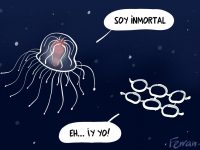Drowning in plastic
Microplastic pollution in the marine environment
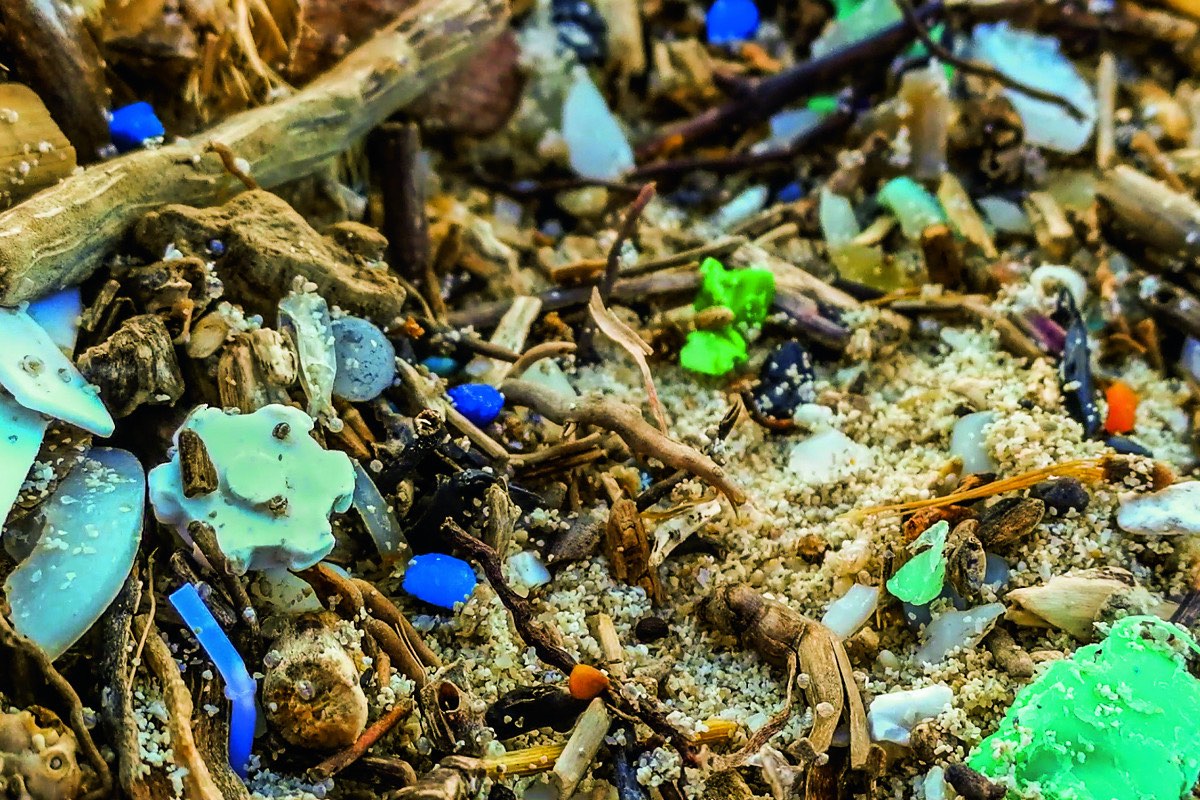
The root of the problem: the plastics industry
Everywhere we look, there are plastic objects. Packaging, supermarket bags, toys, car parts, electronic devices, hygiene products, clothing… In fact, today’s societies have already been described as «plastic civilisations». But, probably, if we were to go back in time and explain to the Belgian Nobel Prize winner Leo Baekeland that his invention of Bakelite (the first mass-produced synthetic plastic) in 1907, which caused such a revolution in the chemical industry, has ended up being one of the most serious environmental pollution problems we suffer from, he would not believe it.
During the twentieth century, Baekeland’s discovery sparked the development and synthesis of many other types of thermosetting materials, also known as plastics. The characteristics shared by these organic polymers (based on carbonate structures) of high molecular weight are flexibility, malleability, low density, insulating capacity, resistance to biodegradation, the fact that they are so unreactive and, in addition, their low cost. The vast majority are made from oil by-products, although some plastics are also produced from plant sources, such as some starch derivatives or plant resins like latex or rubber. Since then, plastics have diversified and replaced other materials such as wood, glass, or metal in a number of uses. But it was not until the 1970s that plastics began to be manufactured industrially. So far, production has increased exponentially, at a rate of 5% per year (Andrady & Neal, 2009). According to Crawford and Quinn (2017), if this growth continues, by 2050 there will be as many plastics as there are fish in the sea.

Figure 1. In recent years, microplastics have emerged as one of the main challenges for environmental and conservation policy agendas. Due to their characteristics, these tiny objects have even reached Antarctic regions and have been introduced into the food chain through the organisms that ingest them / Charles Mitchell / Sufrider Foundation Oregon
The PlasticsEurope 2018 report estimated global plastics production at 350 million tonnes in 2017 and, if current trends continue, we may find ourselves with a production scenario of 2 billion tonnes in 2050 (United Nations Environment Programme [UNEP], 2016). The world’s largest producer is China, which manufactures around 50% of plastics, followed by Europe, with 18% production. This huge annual production, combined with the ineffectiveness of current management and recycling mechanisms and the high resistance to degradation of these materials, are the reasons why the vast majority of plastics end up being abandoned in the environment. Once their useful life is over, only 17% of the plastic produced worldwide is recycled, and this reuse cycle can only be repeated a maximum of three times (Crawford & Quinn, 2017). The remaining plastics end up in landfills or in nature, converted into waste that causes serious problems at all levels to the ecosystems in which they are found.
«Once their useful life is over, only 17% of the plastic produced worldwide is recycled»
The oceans are considered the largest plastic landfills in the world (Figure 1). In marine ecosystems, plastics account for most of the waste, between 60 and 95% (NOAA, 2014), 80% of which comes from land-based activities and 20% from offshore activities. The ways in which plastics enter the oceans are numerous and diverse, but the most important route is through rivers and introduced from the coastline, especially in densely populated or industrialised areas (Rojo-Nieto & Montoto Martínez, 2017). Similarly, plastics typology and dimensions greatly influence their impact on the environment and organisms, as well as the tools that the scientific community can use to solve this global problem. Microplastics constitute one of the main challenges facing environmental and conservation policy agendas. That’s why this article will try to provide a comprehensive view of this issue in the Mediterranean Sea.
What are microplastics?
Microplastics are generally defined as plastic fragments measuring less than 5 mm (UNEP, 2016), although experts have not yet reached consensus on the exact measurement range (Figure 2). Their use has extended to much more everyday products, such as exfoliating particles in toothpaste and cosmetic products (Dauvergne, 2018). On the other hand, tiny resin spheres called pellets are used for the production of macroplastics. These are put into moulds and melted down, so that they can take the shape of the plastic object into which they will be transformed. Pellets are one of the most common microplastics in the marine environment. In the chemical industry, other types of microplastics, either as thickeners or as abrasives, are also added to paints in the process of blasting oil and gas pipelines.
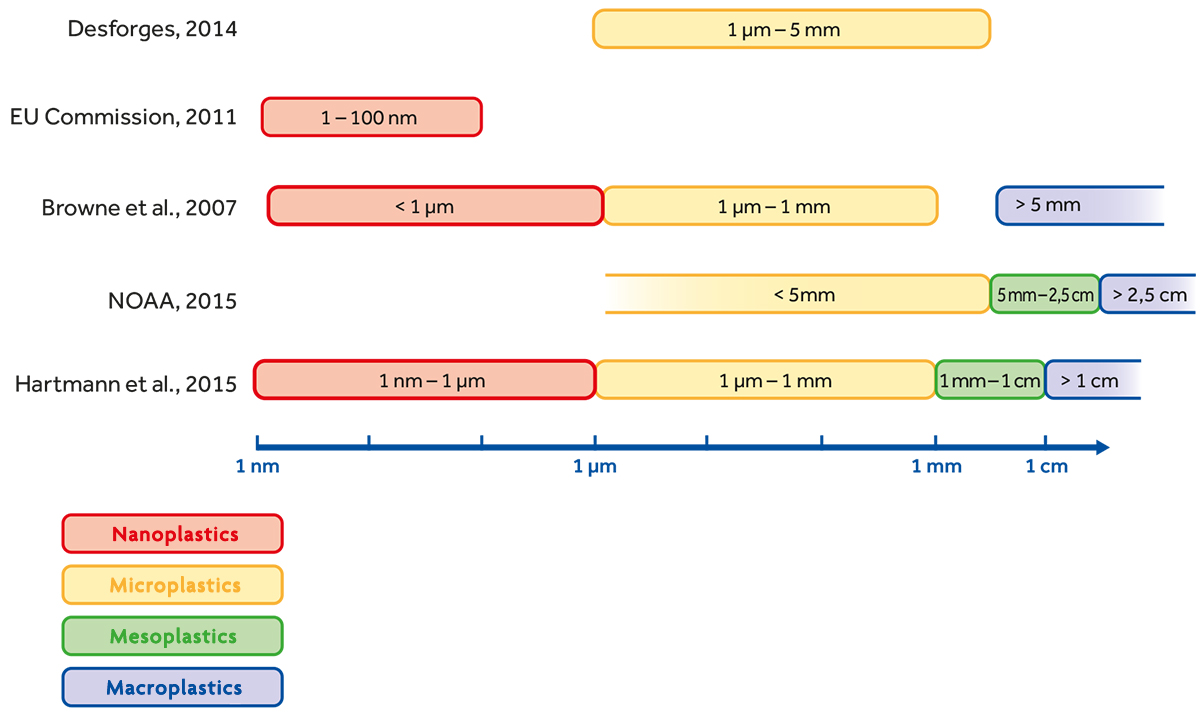
Figure 2. Although we can generally define microplastics as fragments measuring less than 5 mm, there is no absolute consensus on this parameter. In the image, range of measurements of microplastics according to different scientific studies. Source: Rojo-Nieto & Montoto Martínez (2017)
Its presence is global and pervasive in nature in general and in the marine environment in particular. This fact is a consequence of the enormous demand and current production of plastic, in addition to how easy it is dispersed and transported and how little reactivity it has. So it has been distributed even to the most remote ecosystems: from rainwater (Dris, Gasperi, Saad, Mirande, & Tassin, 2016), to Arctic species (Fang et al., 2018) or deep ocean sediments (Woodall et al., 2014). The need to study microplastics independently from macroplastics arises from the results of numerous studies that show that the absence of the latter in an area does not guarantee that the former do not exist (Blašković, Fastelli, Čižmek, Guerranti, & Renzi, 2016). In the 1970s, separate research began on microplastics, and specific scientific methodologies began to be developed to fill in the gaps in knowledge in this field and to define their specific effects on the marine environment (Van Cauwenberghe, Devriese, Galgani, Robben, & Janssen, 2015).
Microplastics classification
Depending on the way they are introduced into the marine environment and their origin, microplastics can be classified into primary and secondary microplastics (Figure 3). On the one hand, primary ones are introduced directly as particles smaller than 5 mm. According to Boucher and Friot (2017), 95 % of primary microplastics come from land-based activities and only 2 % from activities in the marine environment. Some of these are «lost» during the manufacturing, transport, or recycling process of a product (e.g., pellets), while others derive from its use (e.g., residue from tyre erosion, nylon fibres, micropearls from cosmetics, or paint additives). Loss ratios depend mainly on the type of activity from which they come and are an indicator that helps to estimate the volume of primary microplastics that end up in the sea (Boucher & Friot, 2017).
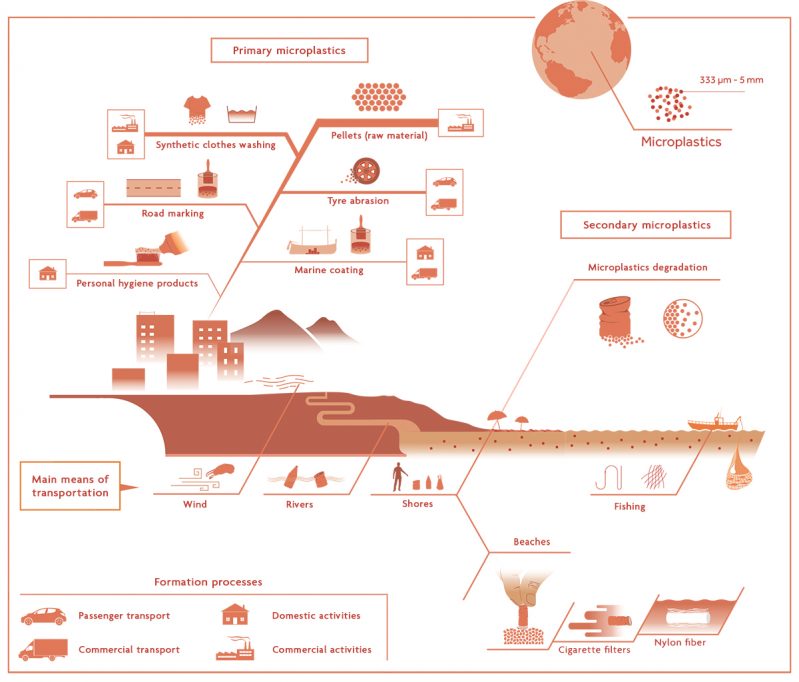
Figure 3. Types of microplastics that end up in the oceans. On the one hand, we find primary microplastics, which are smaller than 5 mm in size when introduced into the marine environment. These pieces usually come from activities carried out on land, from industrial activities such as the production of raw materials (pellets) to more daily activities such as washing clothes (especially synthetic materials). On the other hand, secondary microplastics come largely from the degradation of larger materials, transported by rivers or abandoned on the coast. / Infographic: Javier Sanllehi Hansson
On the other hand, secondary microplastics are the product of the degradation of macroplastics, which, after being abandoned in nature, end up being eroded by physical, chemical, or biological processes. Most of them are formed after large plastics have left the river, i.e., on the coast. There, plastics are exposed to solar radiation, waves, and salinity, which erode them to such an extent that they become discoloured, their molecular structure changes, and they are fragmented to sizes below 5 mm. Some studies show that coast dynamics itself favour the recurrent return of macroplastics to the coastline until they are transformed into secondary microplastics (see Isobe, Kubo, Tamura, Nakashima, & Fujii, 2014). Thus they tend to accumulate on the coastline from where they will more easily disperse offshore. However, the degradation of plastics is always greater on beaches than in the open sea, since they can withstand more radiation and mechanical erosion than in the open sea, where the ambient temperature is lower and the colonisation process by sessile organisms (a phenomenon known as fouling) will protect the fragments from sunlight. There are as many secondary microplastics types as there are macroplastics in the sea. The most common are rigid fragments, laminates, fibres from nets, sponge fragments, etc.
Distribution of microplastics in the Mediterranean
Microplastics have been accumulating in the oceans for at least four decades (Thompson et al., 2004). The main source of microplastics in the Mediterranean is transport via the 69 rivers that flow into it, the most important of which are the Nile, Po, Ebro, and Rhone. These rivers carry microplastics from activities on the mainland, and the greater the population density and the level of technological development of the associated urban centres, the greater the quantity. In addition, the existence of wastewater systems, as well as whether they include microplastic retention mechanisms, will greatly influence the extent of the input. One study estimated that during the year 2000, 3.5 kilotons of microplastics were discharged into the Mediterranean, the highest values compared to other European seas (Siegfried, Koelmans, Besseling, & Kroeze, 2017). These maximums are a consequence not only of the factors associated with the activities that produce them, but also of the particular characteristics of this sea. The Mediterranean is a semi-enclosed sea and, therefore, the processes of accumulation of microplastics within its basin are favoured by the low circulation of the waters.
«The presence of microplastics is global and pervasive in nature in general and in the marine environment in particular»
Once they reach the sea, microplastics tend to accumulate on the coastline, from where they will disperse to the open sea as a result of waves, ocean currents, wind, and vertical transport in the water column. In addition, the density of each microplastic, as well as fouling colonisation, will condition its displacement and deposition area. Therefore, lighter microplastics tend to float and stay in the shallow layers of the sea, while denser ones sink and deposit in deep sediments (Rojo-Nieto & Montoto Martínez, 2017). The oceanographic processes that facilitate the transfer of microplastics in demersal areas are stratified water cascades of various densities, storms with high-energy regimes, convections in the open sea and saline subductions (i.e., movements of water masses as a result of differences in temperature and salinity) (Rojo-Nieto & Montoto Martínez, 2017).
While the areas of plastic accumulation are largely identified in the Mediterranean, we do not have as much information in the study of microplastics and there are still many open questions about their process of transport and accumulation. For example, although «plastic islands» have been found in the areas of current convergence, where the concentration of plastics in general is higher than others, it seems that the accumulation of microplastics is not as significant as might be expected (Cózar et al., 2014). There is the suspicion that these may be being transferred to other links in the ecosystem through ballast processes, bioaccumulation as a result of ingestion by organisms, or other as yet unknown transfer mechanisms (Cózar et al., 2014). Other points where microplastics tend to accumulate are areas with low hydrodynamics, such as Venice or the ports of Belgium (Rojo-Nieto & Montoto Martínez, 2017).
Thus, we can conclude that most microplastics will be found on the coast, in areas where marine currents converge, areas with low hydrodynamics, and deep sediments. However, it should be added that microplastics can be ingested by marine organisms, and thus enter the food chain and be transported to distant regions or bioaccumulate in the fauna.
The impact of microplastics on the marine environment
Microplastics are considered contaminants at many levels and produce negative effects on both the physical environment and the marine biota. According to Rojo-Nieto & Montoto Martínez, (2017), the main impacts are, firstly, the accumulation and dispersion of toxic substances: microplastics act as vectors for toxic compounds. These may have been acquired as additives during their manufacturing process or absorbed during exposure to the marine environment. Some of the additives that have been found are phthalates, bisphenol A, and nonylphenols. On the other hand, in the oceanic environment, microplastics tend to accumulate heavy metals and hydrophobic organic pollutants, and can concentrate very high amounts of these substances. The toxins they carry can be dispersed wherever microplastics accumulate, such as the beach or the interior of any organism that ingested them. In the second case, it has been documented that toxins (depending on what was absorbed and its dose) can act as endocrine disruptors or carcinogens. The dangers of contaminants in marine life depend on both the concentration of the contaminants and how long they remain in the body, as well as their place in the food chain.
Secondly, microplastics alter the physical properties of sediments: as recently mentioned, it is common for microplastics to accumulate in sedimentary strata, both on beaches and on the marine continental shelf or in deep sediments. When these accumulate, they increase the permeability of the sediment and can modify water flows and nutrient distribution. On the other hand, they can also decrease the maximum temperature of the sediment and have negative effects on species such as sea turtles, either by extending the incubation period of the eggs or by varying the ratio of male to female hatchlings (which depends on the temperature of the sand where they made their nests).
«Coast dynamics favour the recurrent return of macroplastics to the coastline until they are transformed into secondary microplastics»
Thirdly, microplastics are vectors of exotic and pathogenic species: when microplastics reach the sea, biofilms tend to form around them; that is, a shell made up of microorganisms and plankton. When this happens, they function as vectors and disperse potentially invasive pathogenic or exotic species, which can unbalance and endanger the biodiversity of marine ecosystems. On the other hand, the formation of biofilms triggers the process of colonisation by other sessile organisms that slowly ballast the microplastic, which increases in weight and tends to move towards deeper areas or be deposited at the seabed.
Fourth, because of their small size, microplastics are mistaken for food and are ingested by many species, from cetaceans, birds, and fish, to zooplankton, sponges, and filtering organisms. This intake can be intentional, accidental, or indirect: they can be mistaken for food, ingested in conjunction with particles of organic matter, or as part of prey that had previously ingested them. Specimens who have ingested microplastics may suffer from eating disorders and intestinal tract blockages, as well as other physiological problems such as the blockage of filtering organs or reproductive issues. Microplastics can also enter their body through the gills (as seen in crabs), from where they can penetrate the circulatory system and enter the bloodstream. However, it has been documented that some species of polychaetes (marine Vermetidae) can excrete the microplastics they have ingested without suffering associated damage. We should also add that microplastics can be transferred along the food chain; that is, they can bioaccumulate in the organisms of the upper sections, such as large predators, marine mammals, or water birds. As they are transferred and bioaccumulate, the concentration within the organisms can increase, as can their toxic potential.
«The main source of microplastics in the Mediterranean is transport via the 69 rivers that flow into it»
Finally, microplastics alter the flow of organic matter and vertical planktonic migrations. As already mentioned, planktonic microorganisms ingest microplastics by mistake. These can be excreted and form part of the faecal pellets which in turn will serve as food for larger organisms. These faecal pellets are usually made up of compact, dense organic matter, so they sink quickly and have high sedimentation rates. Microplastics, on the other hand, tend to have low densities and, by adhering to faecal pellets, reduce their sedimentation rate and keep them in the uppermost areas of the water column, which facilitates reengagement or fragmentation.
Regulation, scientific advances, and local initiatives
Laws specifically aimed at solving the problem of microplastics are scarce, but, on the other hand, during the last decades a legal framework has been woven at international, European, national, and regional level to deal with plastics pollution in general (Figure 4). This framework focuses mainly on measures to regulate waste management and the marketing and production of plastics.
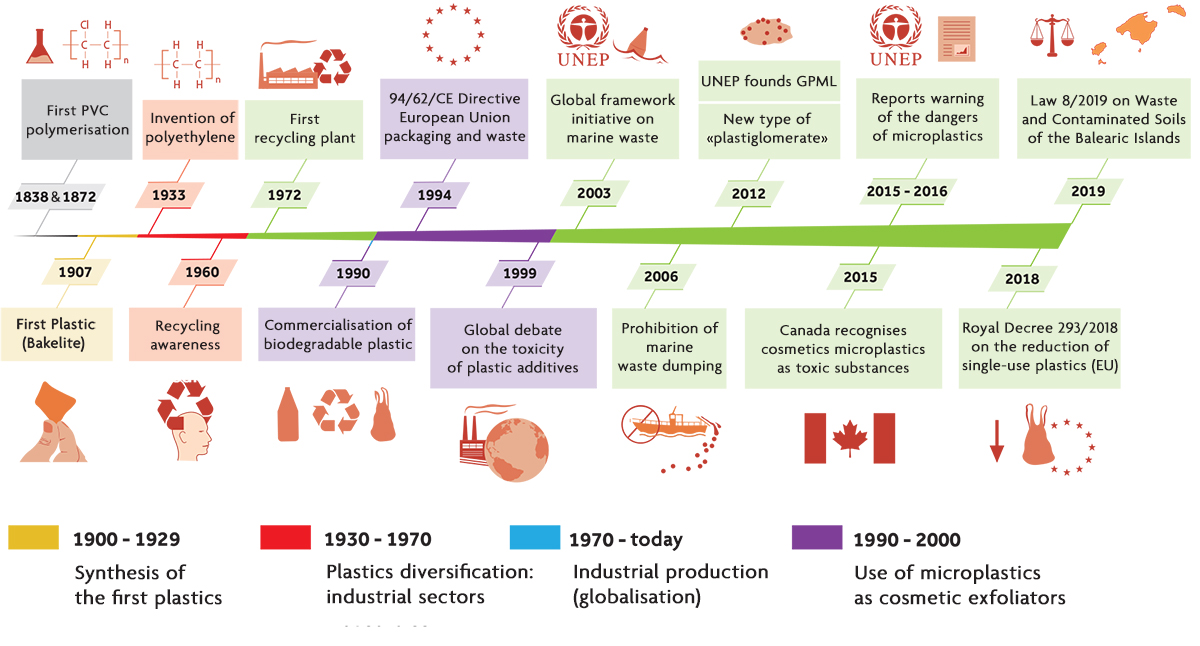
Figure 4. Chronology of the appearance of plastic and the subsequent regulation of its uses, from the synthesis of the first materials of these characteristics to the latest regulations aimed at stopping plastic pollution, such as the Law on Waste and Contaminated Land of the Balearic Islands in 2019. Infographic: Javier Sanllehi Hansson
At the international and European level, the United Nations Environment Programme (UNEP) has been one of the driving organisations. The United Nations Convention on the Law of the Sea (1982) included plastic pollution as one of the issues to be addressed and developed key reports on the subject, such as Marine plastic debris and microplastics: Global lessons and research to inspire action and guide policy change, published in 2016. In addition, during the 2011 event in Honolulu, the organisation developed the «Honolulu Strategy», the first global agreement aimed at the reduction, prevention, and management of plastic waste.
Similarly, since the Convention for the Protection of the Marine Environment and the Coastal Region of the Mediterranean in 1975, protocols, action plans, and strategic frameworks have been developed including management measures to combat plastic pollution. Other international organisations, such as UNESCO and the Group of Experts on the Scientific Aspects of Marine Environmental Protection, have also contributed to the development of reports and strategic lines in this field. During the 1976 Convention for the Prevention of Pollution from Ships, the ban on dumping garbage from yachts was ratified in Annex V. On the other hand, the European Union incorporates in its marine strategies the fight against pollution by plastic and microplastics and has also elaborated specific directives within the framework of the strategy. One example is directive 2015/720, which updates the regulations with regard to reducing the consumption of lightweight plastic bags and which is being applied by means of a fee in their marketing to the consumer, or directives 2006/07/EC and 2004/12/EC, which affect the tools and strategies for improving waste management and recycling mechanisms. In 2018, this strategy was reviewed and new European challenges were proposed to be met in 2030. On the other hand, some European countries, such as Finland, France, Italy, or Sweden have implemented specific laws prohibiting the use of plastic micropearls in cosmetics.
At the national and regional level, Spain applies European policies on plastic pollution through the 2011 Law on Waste and Contaminated Soils, based on the European Waste Framework Directive. In addition, through the application of marine strategies and the Water Framework Directive, the scientific community controls pollution by plastics in marine ecosystems and water bodies. On the other hand, in order to comply with the requirements of the European Commission’s plastics strategy, Royal Decree 293/2018 of 18 May, on the reduction of plastic bag consumption, was passed in 2018, creating the Register of Waste Producers (with a specific section for plastic bag manufacturers). This royal decree started to be compulsory in 2020. Some autonomous communities anticipated its application and made their own laws, as is the case of the Law on Waste and Contaminated Land of the Balearic Islands, passed in 2019.
«Microplastics can be ingested by marine organisms, and thus enter the food chain»
Finally, scientists and conservation organisations are also working to increase awareness of this problem, as well as to educate society and find solutions to a problem that affects us all. Some examples are the Nixe 3 project, which began in 2010 and monitors plastic waste in the Balearic Islands, among other lines of research. Based on the data they collect, they want to find out where ocean currents accumulate plastics. Another example would be the citizen science project Plástico 0 by Observadores de Mar, which aims to analyse the amount of microplastics on beaches through the collaboration between the education sector and CSIC scientists. In the Pityusic Islands, this project has been conducted since 2017 by GEN-GOB Ibiza, which has managed to monitor ten beaches in Ibiza and Formentera and involve the vast majority of educational centres in the initiative. Other organisations such as Rezero, Plastic Free, or Nasti de Plàstic are actively working on organising beach clean-ups and encouraging the population to adopt more sustainable consumption habits and open the way to a future with less global plastic production.
Society as a whole has to use all the tools at its disposal to find solutions to microplastic pollution, a threat that often goes unnoticed but nevertheless represents one of the greatest global problems of our age. Finding alternatives to plastic, reducing production, and avoiding the consumption of disposable packaging are the main strategies being considered, and we will have to adopt them out of social and environmental responsibility for the health of the human species, marine ecosystems, and nature.
References
Andrady, A. L., & Neal, M. A. (2009). Applications and societal benefits of plastics. Philosophical Transactions of the Royal Society of London B, 364, 1977–1984. doi: 10.1098/rstb.2008.0304
Blašković, A., Fastelli, P., Čižmek, H., Guerranti, C., & Renzi, M. (2016). Plastic litter in sediments from the Croatian marine protected area of the natural park of Telaščica bay (Adriatic Sea). Marine Pollution Bulletin, 114(1), 583–586. doi: 10.1016/j.marpolbul.2016.09.018
Boucher, J., & Friot, D. (2017). Primary microplastics in the oceans: A global evaluation of sources. Gland: IUCN.
Cózar, A., Echevarría, F., González-Gordillo, J. I., Irigoien, X., Úbeda, B., Hernández-León, S., ... Duarte, C. M. (2014). Plastic debris in the open ocean. Proceedings of the National Academy of Sciences, 111(28), 10239–10244. doi: 10.1073/pnas.1314705111
Crawford, C. B., & Quinn, B. (2017). Plastic production, waste and legislation. In Microplastic pollutants (p. 39–56). Amsterdam: Elsevier. doi: 10.1016/C2015-0-04315-5
Dauvergne, P. (2018). The power of environmental norms: Marine plastic pollution and the politics of microbeads. Environmental Politics, 27(4), 579–597. doi: 10.1080/09644016.2018.1449090
Dris, R., Gasperi, J., Saad, M., Mirande, C., & Tassin, B. (2016). Synthetic fibers in atmospheric fallout: A source of microplastics in the environment? Marine Pollution Bulletin, 104(1-2), 290–293. doi: 10.1016/j.marpolbul.2016.01.006
Fang, C., Zheng, R., Zhang, Y., Hong, F., Mu, J., Chen, M., ... Bo, J. (2018). Microplastic contamination in benthic organisms from the Arctic and sub-Arctic regions. Chemosphere, 209, 298–306. doi: 10.1016/j.chemosphere.2018.06.101
Isobe, A., Kubo, K., Tamura, Y., Kako, S., Nakashima, E., & Fujii, N. (2014). Selective transport of microplastics and mesoplastics by drifting in coastal waters. Marine Pollution Bulletin, 89(1-2), 324–330. doi: 10.1016/j.marpolbul.2014.09.041
NOAA. (2014). Turning the tide on trash: A learning guide on marine debris. Retrieved from https://marinedebris.noaa.gov/turning-tide-trash
Rojo-Nieto, E., & Montoto Martínez, T. (2017). Basuras marinas, plásticos y microplásticos: Orígenes, impactos y consecuencias de una amenaza global. Retrieved from https://spip.ecologistasenaccion.org/IMG/pdf/informe-basuras-marinas.pdf
Siegfried, M., Koelmans, A. A., Besseling, E., & Kroeze, C. (2017). Export of microplastics from land to sea. A modelling approach. Water research, 127, 249–257. doi: 10.1016/j.watres.2017.10.011
Thompson, R. C., Olsen, Y., Mitchell, R. P., Davis, A., Rowland, S. J., John, A. W. G., ... Russell, A. E. (2004). Lost at sea: Where is all the plastic? Science, 304(5672), 838. doi: 10.1126/science.1094559
UNEP. (2016). Marine plastic debris and microplastics – Global lessons and research to inspire action and guide policy change. Nairobi: United Nations Environment Programme.
Van Cauwenberghe, L., Devriese, L., Galgani, F., Robben, S. J., & Janssen, C. R. (2015). Microplastics in sediments: A review of techniques, occurrence and effects. Marine Environmental Research, 111, 5–17. doi: 10.1016/j.marenvres.2015.06.007
Woodall, L. C., Sanchez-Vidal, A., Canals, M., Paterson, G. L. J., Coppock, R., Sleight, V., ... Thompson, R. C. (2014). The deep sea is a major sink for microplastic debris. Royal Society Open Science, 1(4), 140317. doi: 10.1098/rsos.140317





